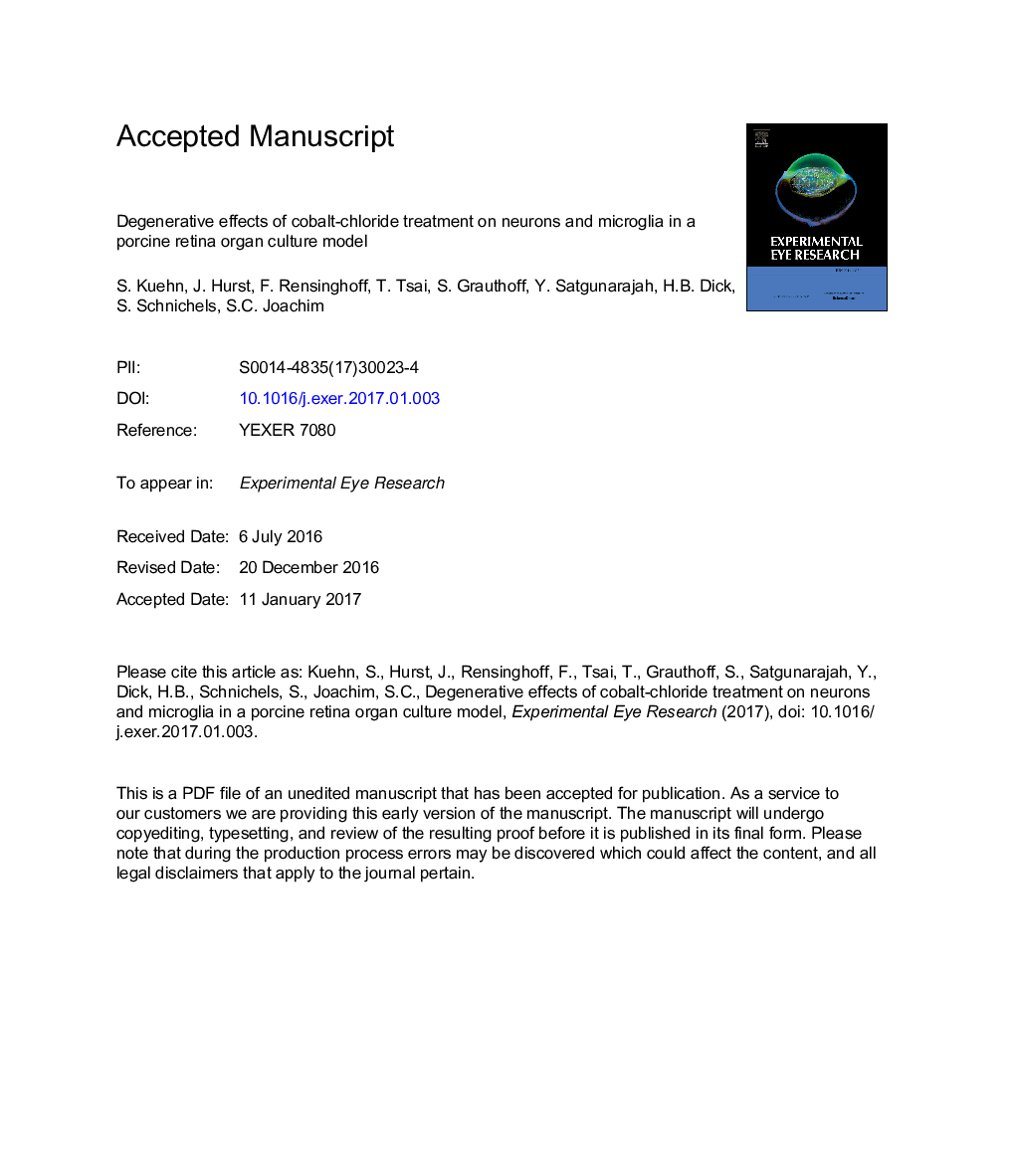| کد مقاله | کد نشریه | سال انتشار | مقاله انگلیسی | نسخه تمام متن |
|---|---|---|---|---|
| 5704178 | 1602567 | 2017 | 46 صفحه PDF | دانلود رایگان |
عنوان انگلیسی مقاله ISI
Degenerative effects of cobalt-chloride treatment on neurons and microglia in a porcine retina organ culture model
ترجمه فارسی عنوان
اثرات تخریب پذیری درمان کبالت کلرید بر روی نورون ها و میکروگلاییا در یک مدل کشت ارگانهای شبکیه
دانلود مقاله + سفارش ترجمه
دانلود مقاله ISI انگلیسی
رایگان برای ایرانیان
موضوعات مرتبط
علوم زیستی و بیوفناوری
ایمنی شناسی و میکروب شناسی
ایمونولوژی و میکروب شناسی (عمومی)
چکیده انگلیسی
Organotypic cultures of porcine retinas were cultured and treated with different concentrations of CoCl2 (0, 100, 300 and 500 μM) for 48 h. After four and eight days, CoCl2 induced a strong degeneration of the porcine retina, starting at 300 μM. A loss of retinal ganglion cells (RGCs, Brn-3a), amacrine cells (calretinin) and bipolar cells (PKCα) was observed. Additionally, a high expression of hypoxia induced factor-1a (HIF-1a) and heat shock protein 70 (HSP70) was noted at both points in time. Also, the Caspase 3 protein was activated and P21 expression was induced. However, only at day four, the Bax/Bcl-2 ratio was increased. The effect of CoCl2 was not restricted to neurons. CoCl2 concentrations reduced the microglia amount (Iba1) and activity (Iba1 + Fcγ-Receptor) at both points in time. These damaging effects on microglia were surprising, since CoCl2 causes hypoxia and a pro-inflammatory environment. However, high concentrations of CoCl2 also seem to be toxic to these cells. Similar degenerative mechanisms as in comparison to retinal ischemia animal models were observed. In summary, an effective and reproducible hypoxia-mimicking organotypic model for retinal degeneration was established, which is easy to handle and ready for drug studies.
ناشر
Database: Elsevier - ScienceDirect (ساینس دایرکت)
Journal: Experimental Eye Research - Volume 155, February 2017, Pages 107-120
Journal: Experimental Eye Research - Volume 155, February 2017, Pages 107-120
نویسندگان
S. Kuehn, J. Hurst, F. Rensinghoff, T. Tsai, S. Grauthoff, Y. Satgunarajah, H.B. Dick, S. Schnichels, S.C. Joachim,
